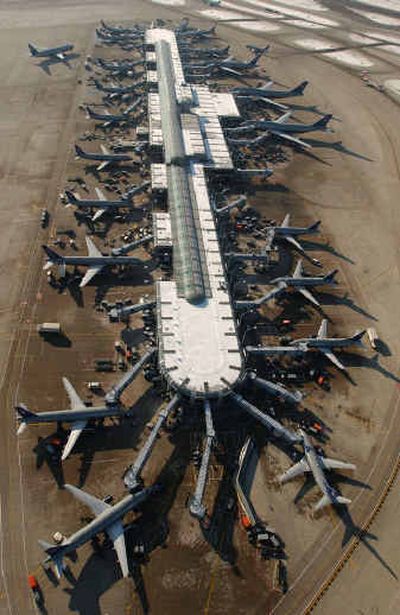More turbulence for big airlines

ATLANTA — When AirTran Airways chief executive Joe Leonard told federal lawmakers last month they should let some of his competitors fail, the nation’s major carriers might have found his comments self-serving.
But was he right?
Some industry observers say the big carrier concept is an endangered species as competition increases from low-fare airlines.
The need to reduce wages and increase employee efficiency has been the mantra at several major airlines, particularly Atlanta-based Delta Air Lines Inc., as they try to meet the challenge. But analysts, academics and even some airline executives believe that may not be enough to save these carriers because of their size, the low ticket prices people want and the government’s unwillingness of late to step in and help.
“There’s no doubt that the overall health of the airline industry would benefit from some carriers shutting down and going out of business,” said Philip Baggaley, an airline industry analyst with Standard & Poor’s in New York.
While noting that it is still important for the carriers that remain to lower their costs, he said, “Over time, there will probably be fewer large airlines.”
Known as legacy carriers, the six airlines — Delta, United Airlines, American, Northwest, Continental and US Airways — had a large presence in multiple regions prior to deregulation in 1978. US Airways before deregulation was a collection of regional carriers that merged into a legacy carrier.
The big carriers have benefited in the past by operating a hub-and-spoke system, using big cities as bases from which connecting flights to smaller markets are routed.
Most of the low-fare carriers have succeeded by operating a point-to-point system focusing on large markets. While that has given the legacy carriers greater competition, it has also allowed them to maintain their niche, raise additional revenue through price premiums and increase the number of passengers per plane through connections to the smaller destinations.
But the low-cost airlines are moving onto the big companies’ turf. Orlando, Fla.-based discount carrier AirTran has expanded into a single hub-and-spoke type system centered around its Atlanta base.
Another low-fare carrier, JetBlue Airways, has said it plans to receive next year the first seven of 100 mid-sized jets that will allow the New York-based company to fly to smaller cities.
Downsizing, merging with another large airline or folding could be inevitable for some legacy carriers, said Paul Biederman, who teaches about the airline industry at New York University.
“There will be one or two big ones left and then you will have medium-sized ones like Southwest and AirTran, and then the regional carriers,” Biederman said. “It’s going to happen by hook or by crook, either by voluntary merger or bankruptcy. The market is going to decide this, not Congress or the (Air Transportation) Stabilization Board.”
Last month, the government signaled its desire to stay on the sidelines when the board denied bankrupt United Airlines Inc.’s bid for a $1.6 billion federal loan guarantee.